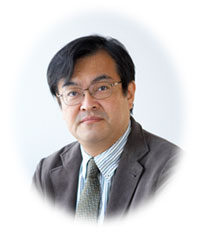|
 Neuroscience 2009, the 32nd Annual Meeting of the Japan Neuroscience Society,
will be held in the city of Nagoya. I would like to express my
gratitude to the many people who have supported and collaborated
in so many
different ways with the preparations so far. Neuroscience 2009, the 32nd Annual Meeting of the Japan Neuroscience Society,
will be held in the city of Nagoya. I would like to express my
gratitude to the many people who have supported and collaborated
in so many
different ways with the preparations so far.
In addition to the plenary lectures, special lectures, and Tokizane
Award and Tsukahara Award lectures, the Meeting will include 47
symposia (with 231 presentations), 53 regular oral presentation
sessions (235 presentations), and 1,222 poster presentations, with
the total of 1,698 presentations making this the largest meeting
held by the JNS alone in its history and offering an exceptionally
full program.
During the past few years, the JNS has been actively promoting
the use of English, and has endeavored to make its Annual Meeting
more international. As a result, we now welcome numerous participants
from overseas. Neuroscience 2009 will incorporate special programs
including joint symposia with the North American Society for Neuroscience
(SfN), the Federation of European Neurosciences (FENS), and the
Australian Neuroscience Society (ANS); a joint seminar offered
by Japan Science Promotion Agency and Canadian Institute of Health
Research (CIHR); and a seminar organized by young researchers held
as a collaborative project with a German research promotion agency.
These many international events mean that attendance at the Meeting
offers the opportunity to engage with international trends. The
Travel Award, too, attracted 126 applications, the largest number ever, and the 31 prizewinners selected from among
them will also attend the Meeting. A large number of leading international
researchers will in fact give presentations during symposia and
at other events. The Annual Meeting of the JNS
is thus well on the way to becoming an attractive venue for researchers
to present the results of their latest research and obtain information
in international terms, a fact that brings me great satisfaction
as an organizer.
Brain science today is attracting attention from society at large
in a variety of ways. In light of advice from the Minister of Education,
a Brain Science Committee was established that deliberated for
18 months before producing a report entitled “The Basic Concept
of Brain Research and Measures for its Promotion From a Long-Term
Perspective,” and in June 2009 a verdict was returned to the Minister
from the Council for Science and Technology. This included praise
for the concept of brain science as a “comprehensive human science.”
Brain science now includes not only a current of research that
is attempting to understand brain function by integrating understandings
at a range of different levels in terms of biological sciences,
from molecules, cells, and neural circuits through to individual
organisms, but also research oriented toward understanding the
causes of psychological and neurological disorders and developing treatments, and is in
the process of expanding in scope by means of collaboration with
science and engineering and integration with the humanities and
social sciences.
Neuroscience 2009 will concentrate the current status of brain
science into a single meeting. It is my hope that participants
will find it a stimulating venue where their ideas can be renewed
with
a view to future research.
|
![]()